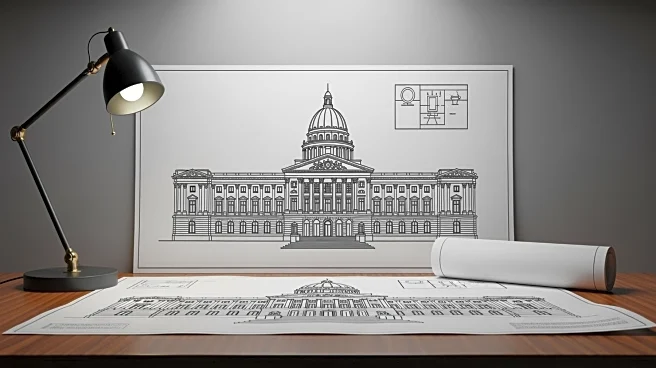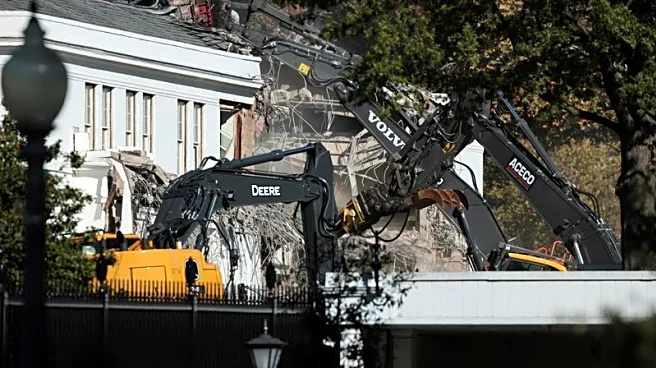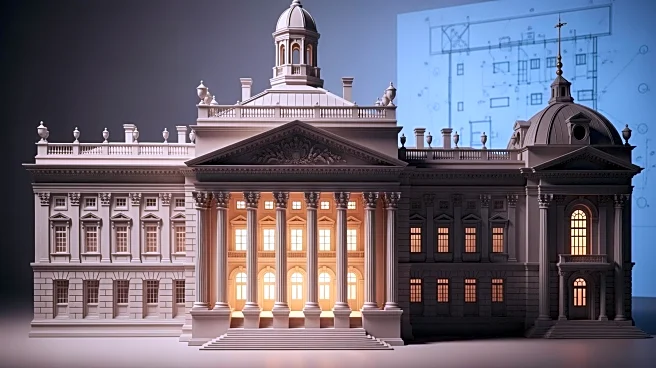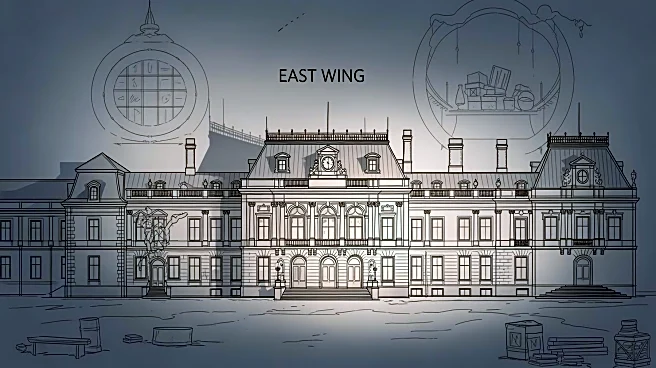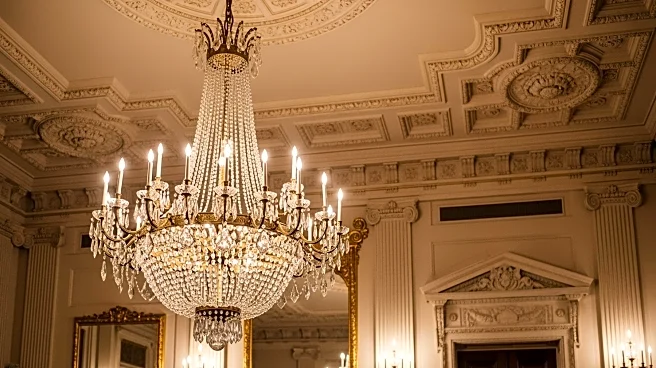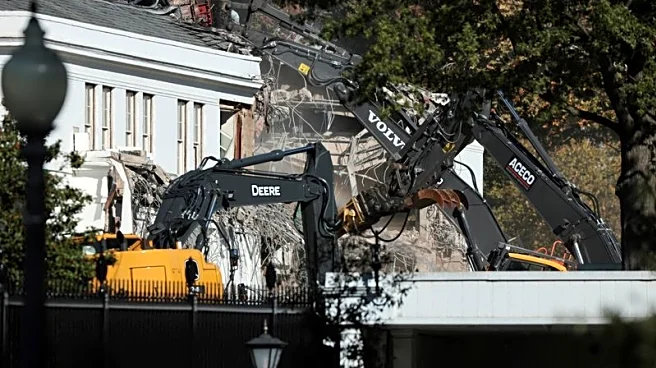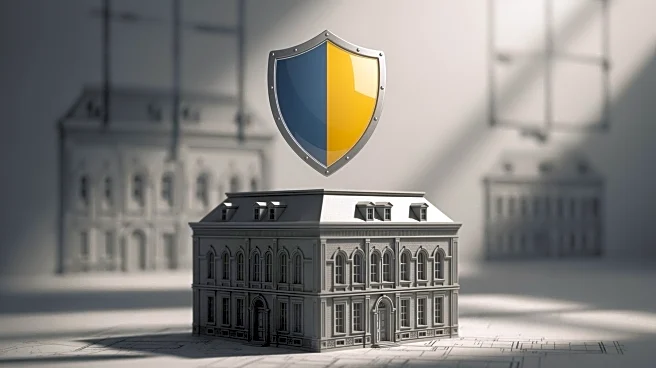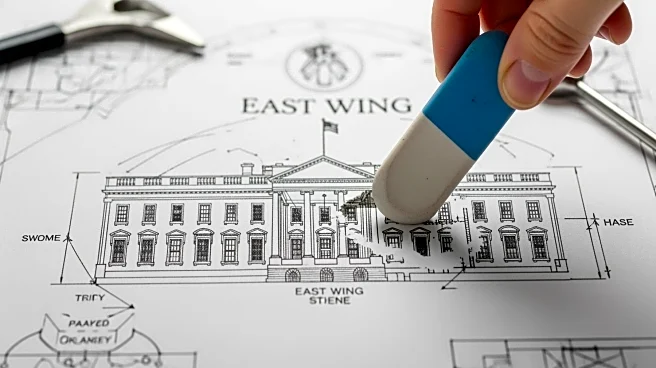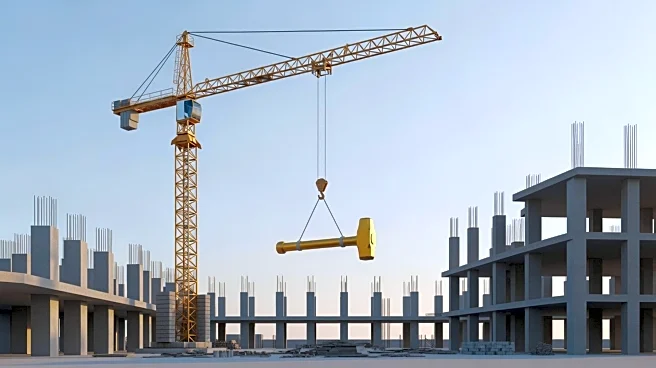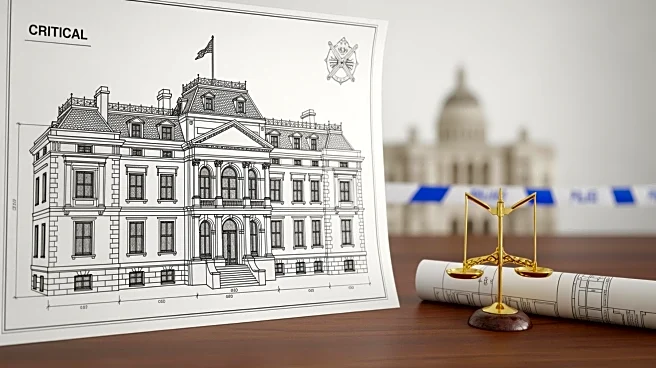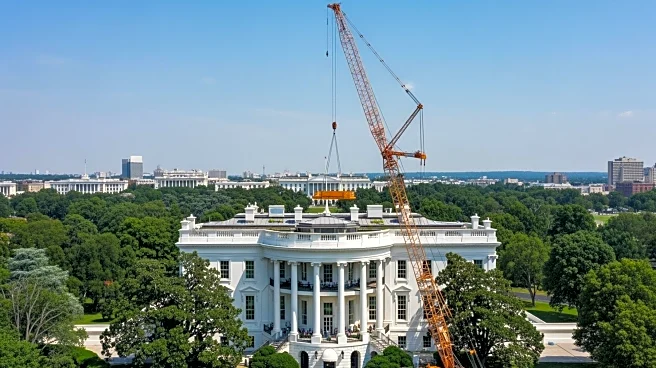What's Happening?
The East Wing of the White House is expected to be demolished as soon as this weekend, according to sources. Priya Jain, chair of the Society of Architectural Historians and an associate professor at Texas
A&M University, discussed President Trump's planned ballroom, which is believed to be the reason for the demolition. The East Wing has historically housed offices for the First Lady and her staff, as well as the White House Social Secretary. The demolition marks a significant change in the White House's structure, reflecting President Trump's vision for the premises.
Why It's Important?
The demolition of the East Wing signifies a major alteration to the White House, impacting its historical architecture and the operations within. This move could affect the traditional roles and functions associated with the East Wing, such as the First Lady's office. The decision may also spark discussions on the preservation of historical sites versus modernization efforts. Stakeholders in architectural preservation and political circles may express concerns or support, depending on their views on historical conservation versus contemporary needs.
What's Next?
Following the demolition, construction of President Trump's planned ballroom is expected to commence. This development may lead to further architectural changes within the White House complex. Political leaders and historians might react to the changes, potentially influencing public opinion on the administration's priorities regarding historical preservation. The project could also set a precedent for future modifications to the White House, impacting its historical integrity.
